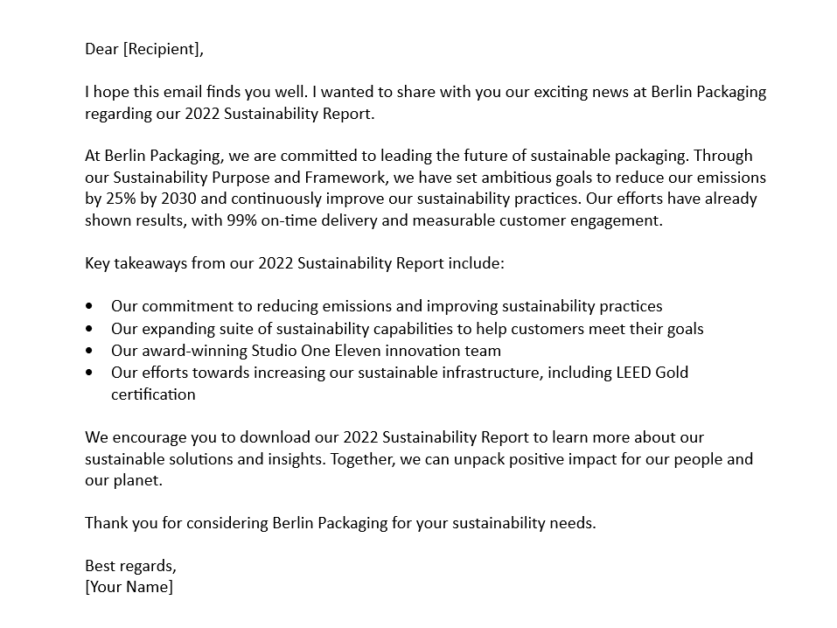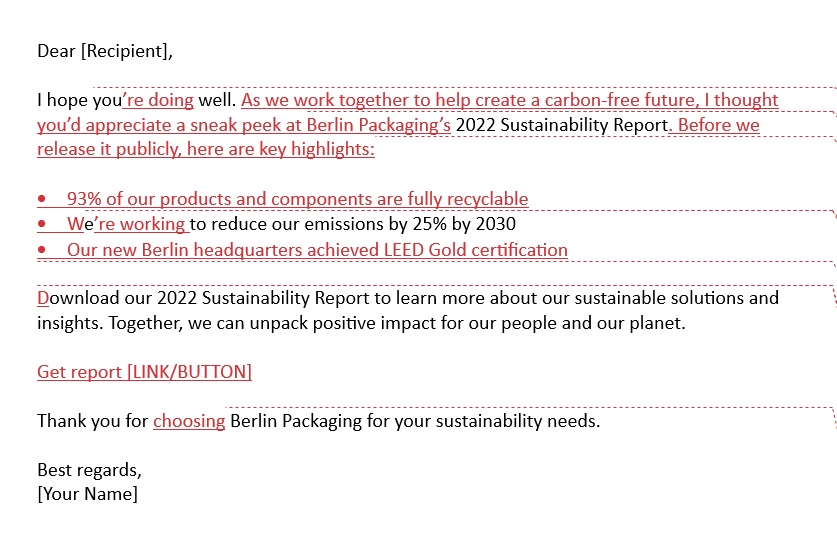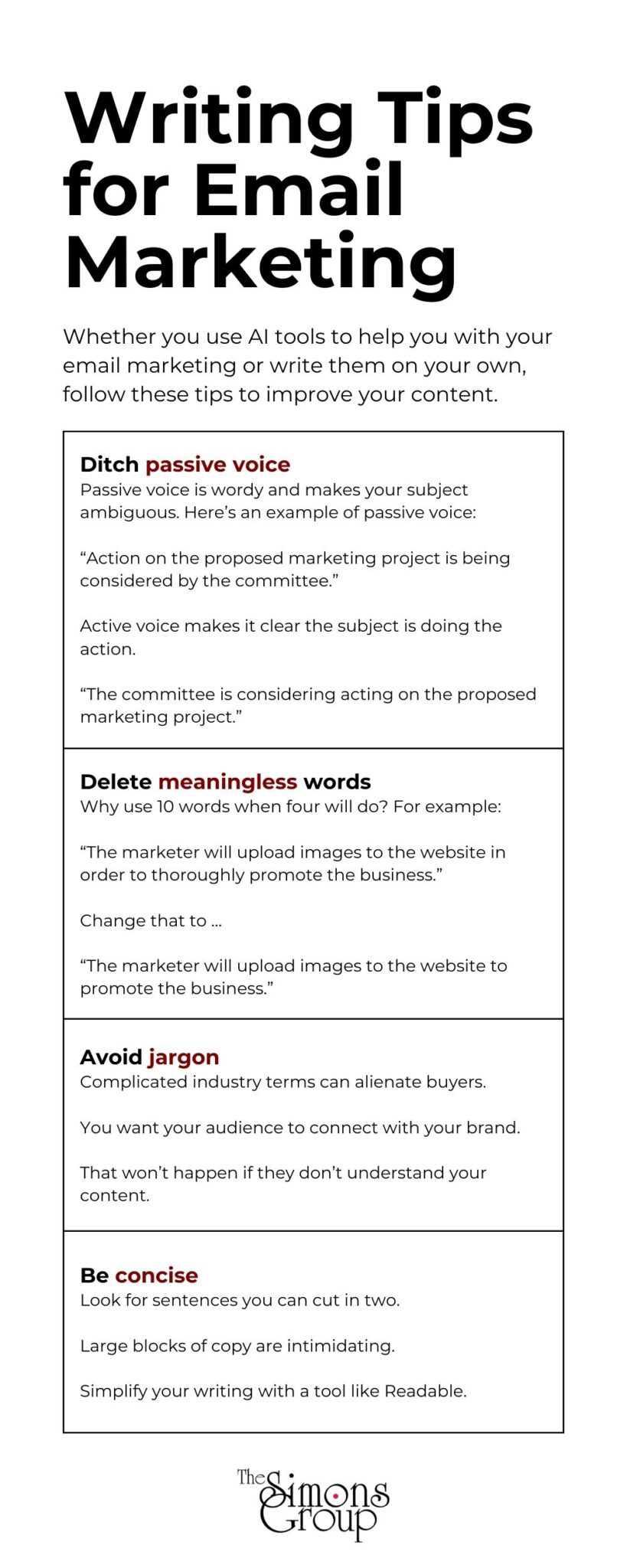Business-to-business (B2B) email marketing is experiencing a renaissance, thanks to new technologies and tools. Increased demand for authentic and personalized interactions among buyers is another contributing factor. If you’re treating email marketing like you did 10 years ago, it’s time for a reboot.
Email is a core digital marketing format for B2B businesses. Before learning what’s coming for 2024, consider the benefits. Email marketing helps B2B businesses:
- Build trust and credibility
- Improve brand awareness
- Educate and engage buyers
- Increase website engagement
- Fuel sales of products and services
Email marketing isn’t dead
I can’t recall the number of times I’ve seen the headline, “Is Email Marketing Dead?” It appears regularly in the marketing world. It’s not dead, nor has it ever been. Since 2020, email marketing revenue has increased steadily, according to Statista. The global data company predicts that by 2027, it will reach $17.9 billion worldwide. This growth is significant, considering in 2020, it was $7.5 billion.
Here’s another example: Newsletters – a longtime staple of email marketing – are booming. NetLine reported a 307% increase in year-over-year newsletter registrations in its 2023 State of B2B Content Consumption & Demand Report. Similarly, more than 80% of global marketers used email newsletters as part of their marketing strategies in 2020, Statista data shows.
What’s changing in B2B email marketing in 2024?
B2B marketers experimented with artificial intelligence (AI) tools en masse this year. In doing so, they learned how to use them to their advantage. While marketers aren’t using AI to its full potential, that will change. In 2024, they’ll embrace AI technology to plan, create and manage email marketing. They’ll tap AI’s capabilities in ways that include:
1. Brainstorming topic ideas.
Who doesn’t have trouble coming up with high-value, relevant email topics all the time? To help keep content fresh, B2B marketers will turn to AI tools more than ever. That’s because AI can help speed up the process.
For example, I prompted GPT 3.5 to give me 15 email marketing topics for a B2B business that makes tools for commercial contractors.
Prompt: Generate 15 topic ideas for email marketing at a B2B business that makes tools for commercial contractors. Exclude ideas that involve green building, industry trends, customer testimonials or case studies.
Result
I included exclusions because I knew GPT would default to those categories if I didn’t rein it in. The list it gave me isn’t bad. But I had to kick out three ideas because they were redundant.
Here are a few of the 12 ideas that GPT returned:
- Provide detailed checklists for routine tool maintenance, helping contractors keep their equipment in peak condition.
- Showcase accessories or add-on features that can enhance tool functionality.
- Give subscribers an exclusive look at upcoming tool innovations and features before the public has access to them.
- Provide insights into the latest safety standards and regulations related to construction tools and how your products comply with them.
- Inform contractors about tool rental or leasing options for your equipment, making it more accessible for short-term projects.
- Feature mobile apps or software tools that help contractors manage their equipment maintenance schedules and track tool performance.
- Share tips for maximizing the efficiency of your tools on construction sites.
Pro tip: To refine results, provide more specific prompts. For example, enter prompts for contractors who use specific tools. Other options include prompts for campaign goals or calls to action.
2. Producing content quickly.
Generative AI tools are as prolific as oxygen. Enter “AI email marketing tools” in a search engine and many options appear. But that’s only the beginning. A slate of specialized AI email writers will craft marketing content about any topic in no time. As a result, marketers may worry less about burnout or writer’s block.
Let’s say I want to create a marketing email that highlights sustainability programs at a packaging supplier. I’ll use Copy.ai to create the email.
Prompt: Generate a B2B marketing email up to 150 words that’s based on this webpage:
https://www.berlinpackaging.com/2022-sustainability-report/
Include bullet points to call out the key takeaways and a call to action that encourages readers to download the report. Make the writing conversational but professional.
Result
I’m not thrilled with what Copy.ai produced. For starters, the email body exceeds the word count I asked for. Moreover, although my prompt called for “conversational but professional” writing, the output reads formal. “We are,” rather than “we’re,” and “we have,” rather than “we’ve” are examples of that.
Among other problems:
- The second paragraph references deliveries and customer engagement. What’s the tie to sustainability?
- The bullet point “key takeaways” are factual statements versus outcomes. They’re all bad. One, in particular, stands out: “Our award-winning Studio One Eleven innovation team.” Having an innovation team isn’t the point. Why does it matter? Did the team contribute to sustainability? If so, how? (In AI’s defense, the 108-page report is light on results and heavy on goals.)
- Copy.ai didn’t link to the report.
I reworked the copy to make it concise and enticing. A sustainability report isn’t exactly “sexy” reading. Hinting at exclusivity can improve engagement because it makes readers feel special. Hey, you get access to the report before anyone else. I also reinforced the “we’re in this together” message that Copy.ai touched on but didn’t carry through. That’s why I added, “As we work together …” in the second sentence.
Pro tip: AI is a good starting point to save time. Test a couple of AI tools and prompts to get ideal outputs. Combined with other AI- and human-generated copy, it’s possible to create a presentable email.


3. Personalizing emails with dynamic content.
B2B marketers will lean on AI to create hypertargeted content, based on detailed analyses of customers’ data. AI tools collect and analyze data from browsing and purchasing histories, social media interactions, past engagement and demographic information. In turn, this information helps marketers customize emails to buyers’ needs and interests.
Pro tip: Don’t expect to find a free AI tool that will create personalized emails. This level of support typically requires a paid subscription. Examples include Zeta, Dynamic Yield and Mailjet.
4. Creating catchy subject lines and CTAs.
AI tools are great for providing subject line options and calls to action (CTAs). And they get the job done much faster than humans. Most marketers have been using this capability. In 2024, even the last holdouts will come around to the technology.
One caveat: AI has some signature writing flaws. It loves certain words, including explore, discover, unlock and harness. If left unchecked, every subject line and CTA would feature one of those. Savvy marketers will train their AI tools to avoid becoming one-trick ponies.
For this example, I tried GPT 3.5 again.
Prompt: Generate 10 punchy email marketing subject lines that are no more than eight words each and 10 CTAs that are no more than five words each.
The CTAs should encourage B2B buyers to download our case study on this page: https://thesimonsgroup.com/our-work/dhr-global/
Don’t use any of the following words in the subject lines or the CTAs: Unlock, discover, uncover, explore.
Result
GPT ignored that I provided a specific case study. The subject lines are so generic, they could be for any case study. Here are a few of the subject lines it generated:
- Case Study: Fueling B2B Success!
- Success Secrets Inside: Get It Today!
- Mastering B2B Excellence: Download Now!
- Your Roadmap to Success: Download Today!
Here are a few of the CTAs:
- Read It Today!
- Download Now!
- Get It Today!
- Access Case Study Here!
There’s certainly nothing earthshaking here. I guess GPT thinks adding exclamation points to everything improves engagement!! High-five!
Pro tip: Working with AI tools takes a lot of trial and error. If one doesn’t give suitable results, try one or two more.
5. Automating A/B testing.
A/B testing – sending two versions of an email to two sample groups and measuring the results – is time-consuming. AI-powered A/B testing automates the process. It also analyzes test results quickly and identifies top-performing email elements. These elements include subject lines, images, body copy and CTAs.
In 2024, B2B marketers will increasingly use AI tools to accelerate A/B decision-making, also known as split testing. AI can test multiple variables at the same time and pick the winners for maximum open rates in less than a minute. Humans can’t come close to that level of performance.
Pro tip: Expect to pay for most AI tools that will do A/B testing. While AI platforms are free for basic use, this feature usually isn’t. Examples include Brevo, Mailchimp and Reply.
Drawbacks of using AI for email marketing
While AI tools benefit marketers, the technology isn’t perfect. Among the drawbacks:
- AI can’t produce highly original and creative content because it lacks emotion and empathy. Consequently, email marketing can read as if a robot produced it.
- Storytelling appeals to B2B buyers and helps them connect with brands. In contrast, AI is all about data. AI lacks the experiences, background and personal touch that make compelling stories. In short, we’ll always need human storytellers.
- Content may not be factual. Humans must verify the content AI produces.
- Humans need to edit and refine AI-generated content to match brand voice, tone and style. It’s not perfect when it comes to punctuation and grammar, either.
Be aware of and plan for these issues. Using AI isn’t as simple as giving a prompt and two seconds later, everything’s done.

What else is changing in B2B email marketing?
While nearly everyone is talking about and using AI in one capacity or another, it’s not the only shift coming for B2B email marketing in 2024. Technology will help marketers level up from static to interactive emails. Another shift will occur with increased transparency in email marketing.
Interactive emails
Interest in interactive email is high among marketers. The buzz is around a format known as AMP – accelerated mobile pages. AMP elevates basic HMTL-coded content to a feature-rich experience. It enables carousels, accordions, forms, quizzes and other components within the body of an email. AMP isn’t new, but it’s gaining momentum as B2B businesses seek ways to boost buyer engagement. The hitch is that not all email service providers support AMP.
Increased transparency
Concerns about AI ethics and content authenticity are growing. By 2025, 70% of enterprise marketing leaders will identify accountability for ethical AI in marketing among their top concerns, according to Gartner. As a result, B2B marketers will work harder than ever to build trust with buyers in 2024. Steps they might take include:
- Letting subscribers know how often they’ll receive emails and what kinds of content they can expect. Sending emails constantly will annoy them. But sending too few could cause subscribers to lose interest and forget brands altogether.
- Delivering curated, relevant content. Subscribers will drop fast if content doesn’t resonate with their needs and interests.
- Making it easy to unsubscribe. There’s nothing more annoying for subscribers than making them answer a bunch of questions about why they don’t want to receive emails anymore or not being able to find an unsubscribe link.
- Using clear CTAs that align with landing page content. Want buyers to sign up for a webinar or a demo? Create a landing page for the webinar or demo. Don’t send them to a generic webpage.
Elevate your email marketing
Now that you know what’s ahead for 2024, it’s time to take your email marketing to the next level. Start planning your strategy, get the tools in place and prepare for success.



